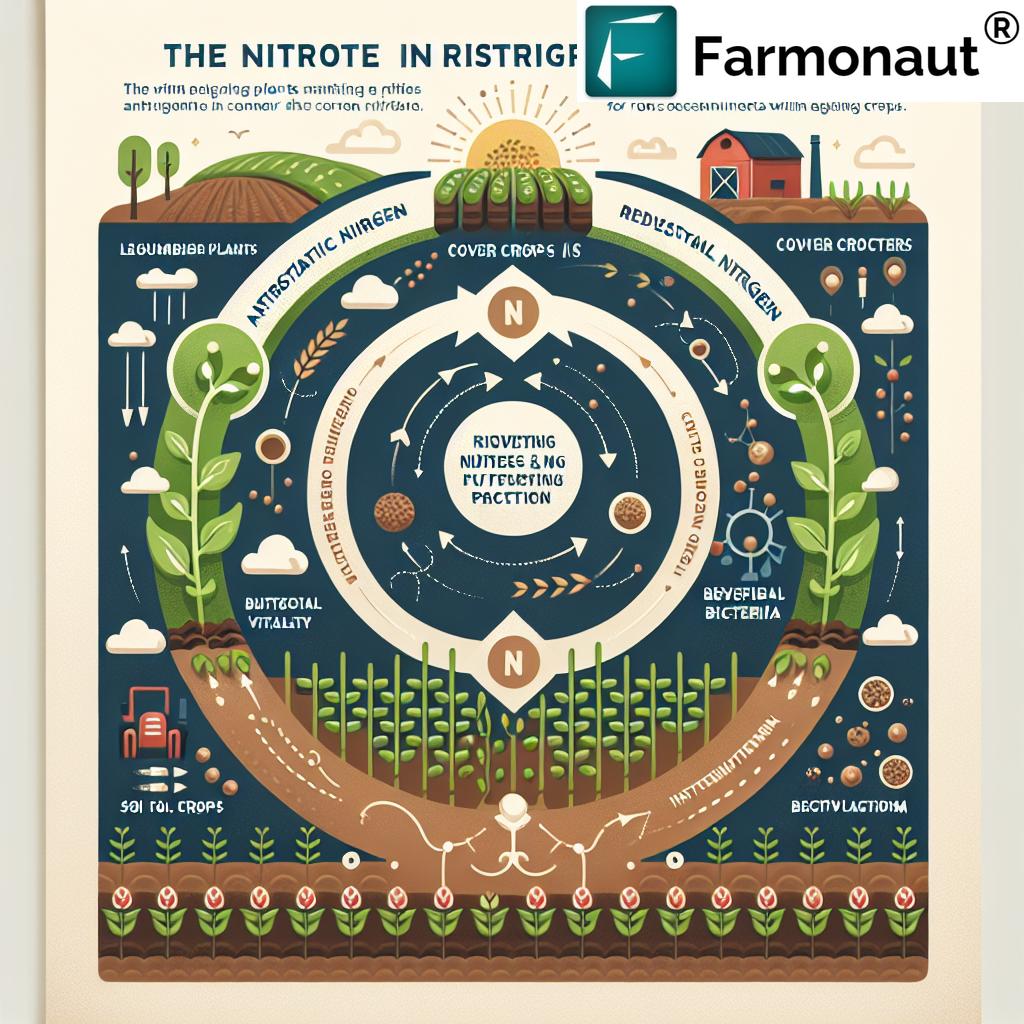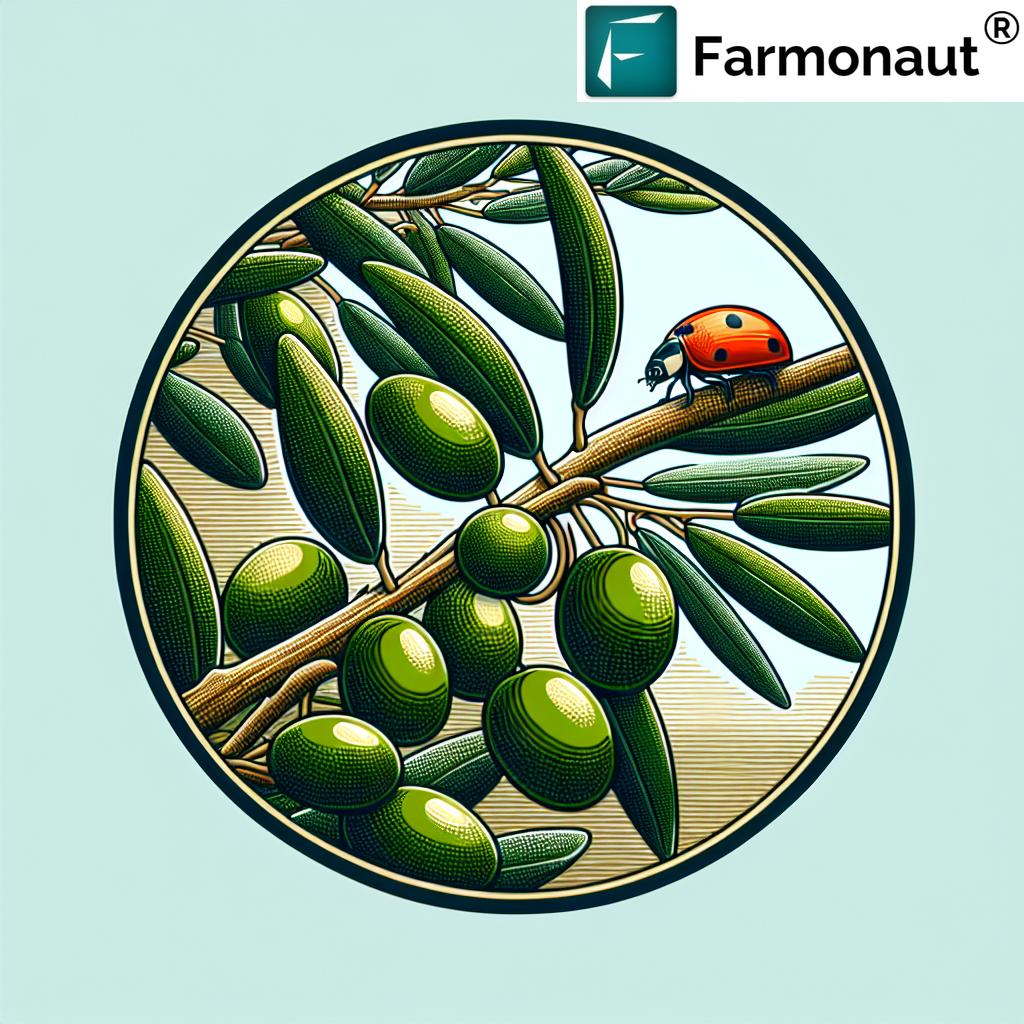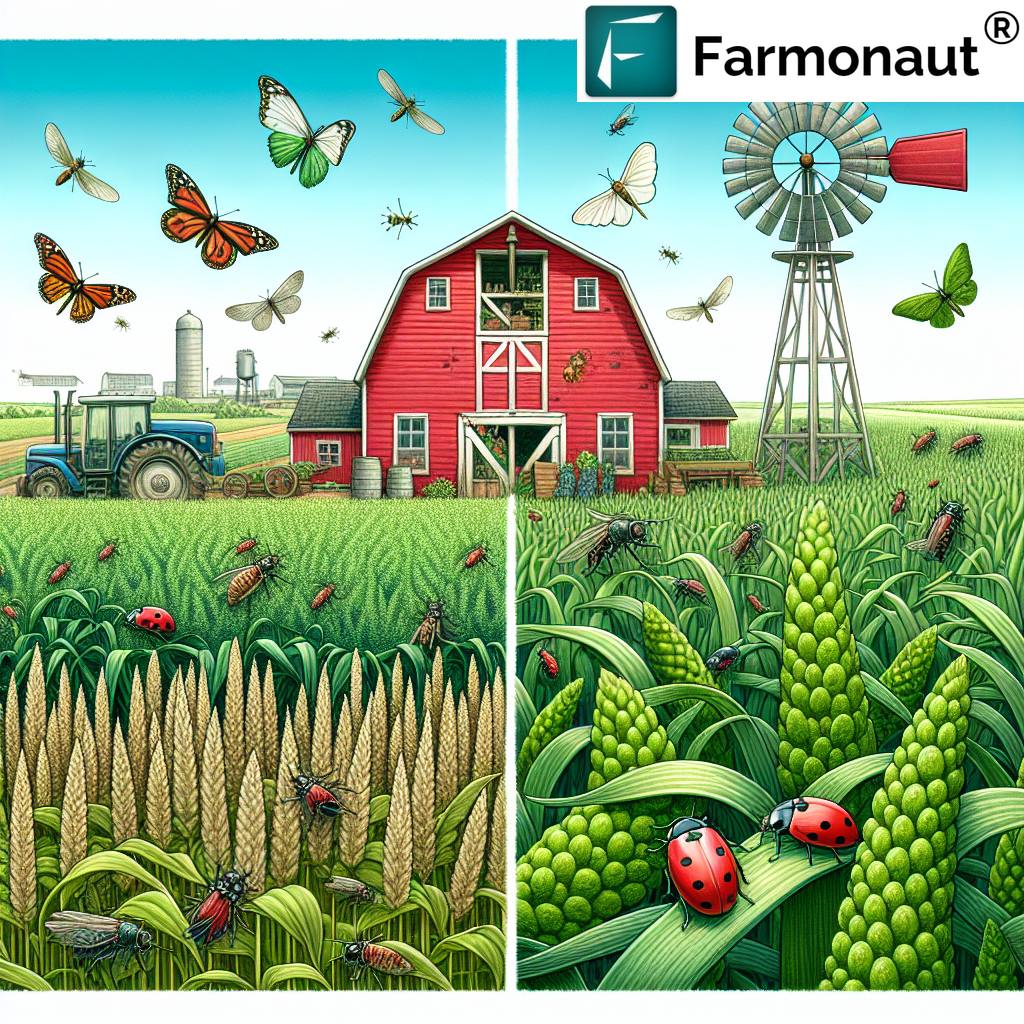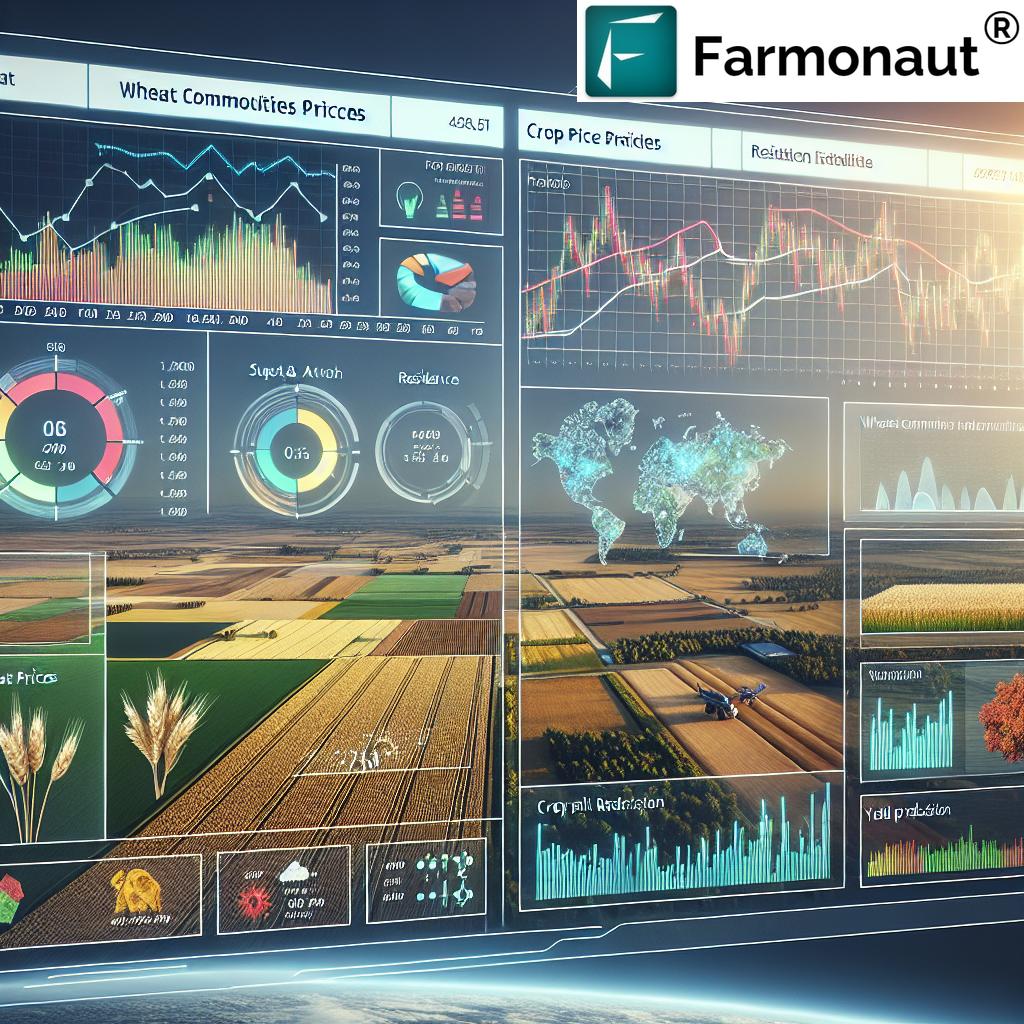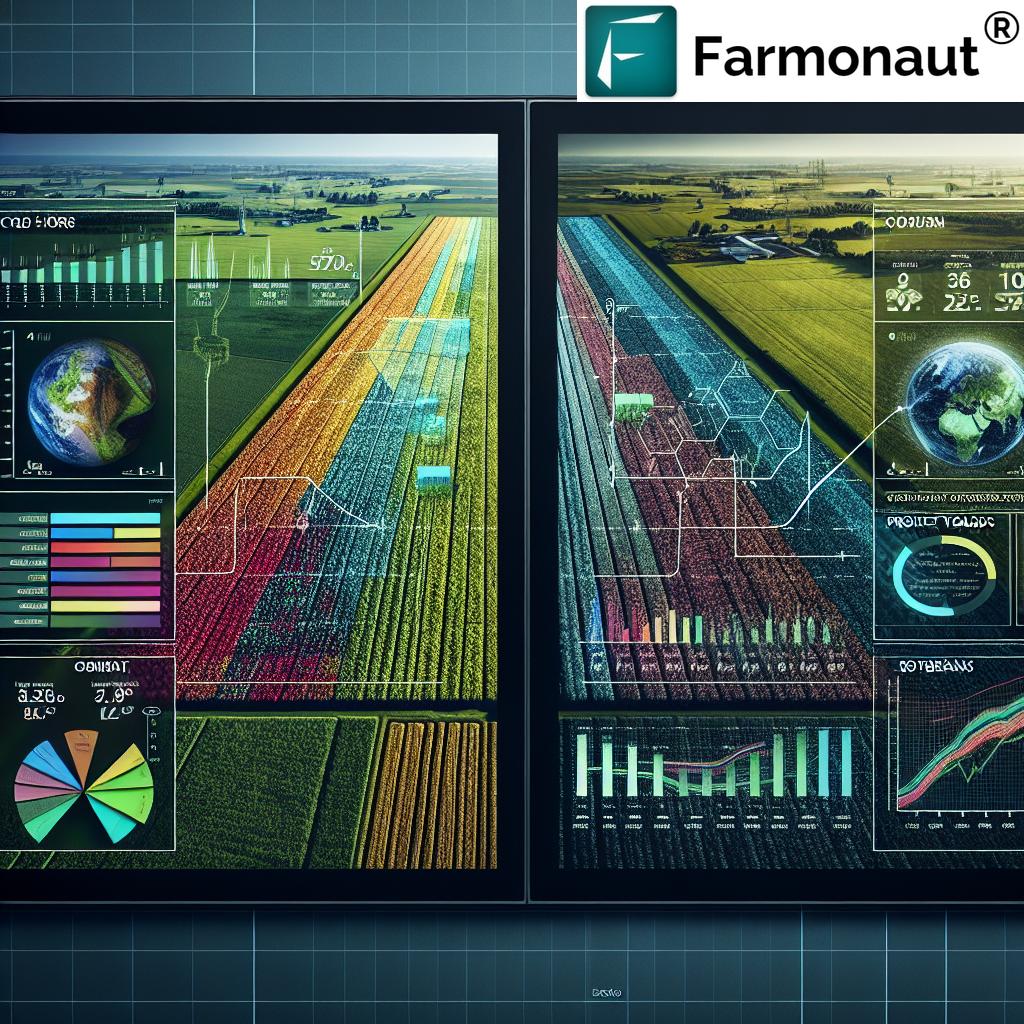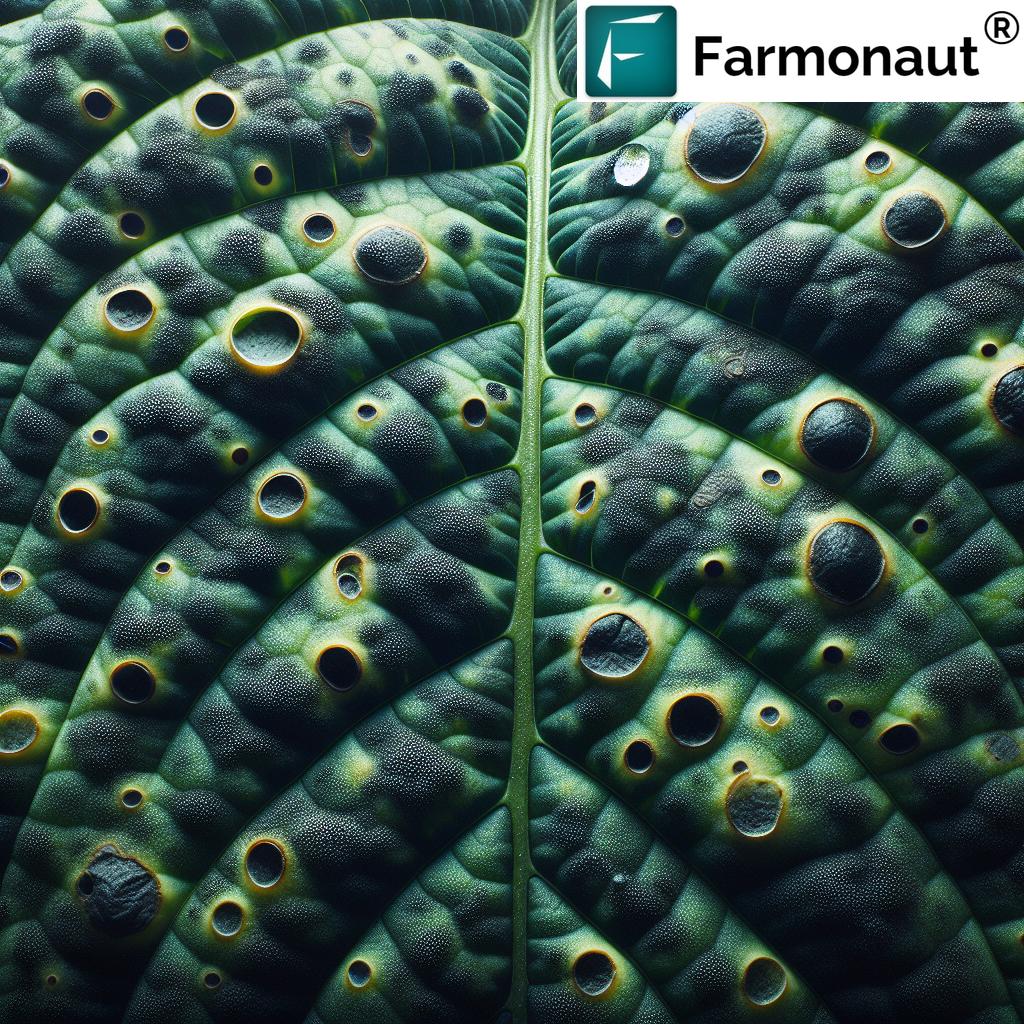
Maximizing Soil Health and Crop Yields: The Power of Rotation, Cover Crops, and Integrated Pest Management
At Farmonaut, we understand the critical importance of maintaining soil health and maximizing crop yields for sustainable agriculture. In this comprehensive guide, we’ll explore the powerful techniques of crop rotation, cover cropping, and integrated pest management that can revolutionize your farming practices. By implementing these strategies and leveraging our advanced satellite-based monitoring systems, farmers can achieve remarkable improvements in soil structure, nutrient availability, and overall crop productivity.
The Importance of Soil Health in Agriculture
Soil health is the foundation of successful agriculture. Healthy soil not only supports robust plant growth but also plays a crucial role in water retention, nutrient cycling, and carbon sequestration. As we face increasing challenges from climate change and the need to feed a growing global population, maintaining and improving soil health has become more important than ever.
At Farmonaut, our satellite-based crop health monitoring system allows farmers to track key indicators of soil health, such as vegetation density and soil moisture levels. By providing real-time data and insights, we empower growers to make informed decisions that promote long-term soil health and sustainability.
The Power of Crop Rotation
Crop rotation is a time-tested practice that involves growing different crops in the same field over successive seasons. This technique offers numerous benefits for soil health, pest management, and overall farm productivity.
Benefits of Crop Rotation:
- Improved Soil Structure: Different crops have varying root systems that penetrate the soil at different depths. This diversity helps improve soil structure and reduces compaction.
- Enhanced Nutrient Cycling: Rotating crops with different nutrient requirements helps prevent the depletion of specific nutrients in the soil.
- Pest and Disease Control: Changing crops disrupts the life cycles of pests and pathogens, reducing their populations and the need for chemical interventions.
- Increased Biodiversity: Crop rotation supports a more diverse ecosystem in the field, promoting beneficial organisms and overall soil health.
- Weed Management: Different crops compete with weeds in various ways, helping to suppress weed growth and reduce herbicide dependency.
Implementing Effective Crop Rotation
To maximize the benefits of crop rotation, consider the following strategies:
- Plan for Diversity: Include a variety of crop types in your rotation, such as grasses, legumes, and broadleaf plants.
- Consider Nutrient Needs: Alternate between crops with high and low nutrient demands to maintain soil fertility.
- Incorporate Legumes: Include nitrogen-fixing legumes like alfalfa or soybeans to naturally replenish soil nitrogen levels.
- Monitor Soil Health: Use Farmonaut’s satellite-based monitoring system to track changes in soil health and crop performance over time.
- Adapt to Local Conditions: Tailor your rotation plan to your specific climate, soil type, and market demands.
The Role of Cover Crops in Soil Health
Cover crops are plants grown primarily to benefit the soil rather than for harvest. These crops play a crucial role in maintaining soil health, preventing erosion, and supporting sustainable agriculture practices.
Benefits of Cover Crops:
- Soil Protection: Cover crops shield the soil from wind and water erosion, especially during periods when fields would otherwise be bare.
- Nutrient Management: Some cover crops, particularly legumes, can fix atmospheric nitrogen, enriching the soil for subsequent crops.
- Organic Matter Addition: When incorporated into the soil, cover crops increase organic matter content, improving soil structure and water-holding capacity.
- Weed Suppression: Dense cover crop growth can outcompete weeds, reducing the need for herbicides.
- Beneficial Insect Habitat: Many cover crops provide food and shelter for beneficial insects, supporting natural pest control.
Choosing the Right Cover Crops
Selecting appropriate cover crops depends on your specific goals, climate, and crop rotation plan. Here are some popular options:
- Legumes: Clover, vetch, and field peas fix nitrogen and improve soil fertility.
- Grasses: Rye, oats, and barley provide excellent soil coverage and add organic matter.
- Brassicas: Mustard and radishes can help break up compacted soil layers with their deep taproots.
- Mixed Species: Combining different types of cover crops can maximize benefits and biodiversity.
At Farmonaut, our satellite monitoring technology can help you assess the performance of your cover crops, ensuring they’re providing the desired benefits to your soil and main crops.
Integrated Pest Management: A Holistic Approach
Integrated Pest Management (IPM) is a comprehensive approach to pest control that focuses on long-term prevention and minimizes the use of chemical pesticides. By combining various management techniques, IPM helps maintain ecological balance while effectively controlling pests and diseases.
Key Components of IPM:
- Prevention: Implement cultural practices like crop rotation and sanitation to prevent pest problems before they start.
- Monitoring: Regularly inspect crops and use tools like Farmonaut’s satellite imaging to detect pest issues early.
- Identification: Accurately identify pests and beneficial organisms to make informed management decisions.
- Action Thresholds: Establish economic thresholds for pest populations to determine when intervention is necessary.
- Control Methods: Use a combination of biological, cultural, mechanical, and chemical controls as needed.
- Evaluation: Assess the effectiveness of IPM strategies and adjust as necessary.
IPM Techniques for Common Crop Pests
Let’s explore some specific IPM strategies for managing common crop pests:
1. Aphids
- Encourage natural predators like ladybugs and lacewings
- Use reflective mulches to repel aphids
- Apply insecticidal soaps or neem oil for severe infestations
2. Colorado Potato Beetle
- Rotate potato crops with non-host plants
- Use row covers to prevent adult beetles from laying eggs
- Hand-pick beetles and larvae in small-scale operations
3. Corn Rootworm
- Implement crop rotation with non-host crops like soybeans
- Use resistant corn varieties
- Apply soil insecticides when necessary, based on monitoring data
By integrating these IPM practices with Farmonaut’s advanced monitoring capabilities, farmers can effectively manage pests while minimizing environmental impact and preserving beneficial organisms.
The Nitrogen Cycle and Soil Health
Understanding the nitrogen cycle is crucial for maintaining soil fertility and optimizing crop growth. Nitrogen is an essential nutrient for plants, playing a vital role in chlorophyll production and overall plant development.
Key Processes in the Nitrogen Cycle:
- Nitrogen Fixation: Conversion of atmospheric nitrogen into forms usable by plants, often facilitated by symbiotic bacteria in legume root nodules.
- Nitrification: The oxidation of ammonium to nitrate by soil bacteria, making nitrogen more available to plants.
- Assimilation: The uptake and incorporation of nitrogen into plant tissues.
- Ammonification: The conversion of organic nitrogen back into ammonium by decomposers in the soil.
- Denitrification: The reduction of nitrate to atmospheric nitrogen, which can result in nitrogen loss from the soil.
Optimizing Nitrogen Management
To ensure efficient nitrogen use and minimize environmental impact, consider the following strategies:
- Precision Application: Use Farmonaut’s satellite data to identify areas of nutrient deficiency and apply nitrogen fertilizers precisely where needed.
- Timing: Apply nitrogen when crops are most likely to utilize it, based on growth stage and environmental conditions.
- Cover Crops: Incorporate nitrogen-fixing cover crops like clover or vetch into your rotation to naturally enrich soil nitrogen levels.
- Manure Management: If using animal manure, properly compost it to stabilize nutrients and reduce the risk of runoff.
- Soil Testing: Regularly test soil nitrogen levels to avoid over-application and potential leaching.
The Role of Soil Microorganisms in Plant Health
Soil microorganisms, including bacteria and fungi, play a crucial role in maintaining soil health and supporting plant growth. These microscopic organisms form complex relationships with plant roots, contributing to nutrient cycling, disease suppression, and overall ecosystem stability.
Key Functions of Soil Microorganisms:
- Nutrient Cycling: Microorganisms break down organic matter, releasing nutrients that plants can absorb.
- Nitrogen Fixation: Certain bacteria, such as Rhizobium species, form symbiotic relationships with legumes to fix atmospheric nitrogen.
- Disease Suppression: Beneficial microorganisms can outcompete or directly antagonize plant pathogens.
- Soil Structure: Microbial activity helps create soil aggregates, improving water retention and aeration.
- Plant Growth Promotion: Some microorganisms produce hormones or other compounds that stimulate plant growth.
Promoting Healthy Soil Microbial Communities
To support a diverse and beneficial soil microbiome, consider the following practices:
- Minimize Tillage: Reduced tillage helps preserve soil structure and protects microbial habitats.
- Add Organic Matter: Incorporate compost, crop residues, or cover crops to provide food for soil microorganisms.
- Avoid Overuse of Pesticides: Many pesticides can harm beneficial soil microbes. Use integrated pest management strategies to minimize chemical inputs.
- Maintain Soil Moisture: Use Farmonaut’s soil moisture monitoring to ensure optimal conditions for microbial activity.
- Consider Inoculation: In some cases, introducing specific beneficial microorganisms can jumpstart soil health improvement.
Crop-Specific Rotation Strategies
While the principles of crop rotation apply broadly, specific strategies can be tailored to different crop types and farming systems. Let’s explore some crop-specific rotation plans:
1. Corn-Soybean Rotation
This common rotation in the Midwest United States offers several benefits:
- Soybeans fix nitrogen, reducing fertilizer needs for subsequent corn crops
- Alternating between grass (corn) and broadleaf (soybean) crops disrupts pest and disease cycles
- Different root structures improve soil health over time
2. Potato Rotation
Potatoes are susceptible to various soil-borne diseases, making rotation crucial:
- Rotate potatoes with non-host crops like grains or legumes
- Aim for at least a 3-4 year rotation to break disease cycles
- Consider including disease-suppressive cover crops like mustard between potato crops
3. Vegetable Crop Rotation
For diverse vegetable operations, group crops by family and rotate between groups:
- Nightshades (tomatoes, peppers, eggplants) → Legumes → Brassicas → Cucurbits
- Include cover crops or green manures between vegetable plantings
- Consider soil-building crops like buckwheat or sudangrass in the rotation
4. Wheat-Based Rotation
In dryland farming systems, wheat rotations can include:
- Wheat → Fallow → Oilseed (e.g., canola) → Pulse crop (e.g., lentils)
- Use cover crops during fallow periods to maintain soil cover and build organic matter
- Incorporate livestock grazing on cover crops or crop residues when possible
Remember, the effectiveness of these rotations can be monitored and optimized using Farmonaut’s satellite-based crop health monitoring system. Our technology allows you to track changes in soil health, pest pressure, and crop performance over time, helping you refine your rotation strategies for maximum benefit.
Integrating Livestock in Crop Rotation Systems
Incorporating livestock into crop rotation systems can enhance soil health, diversify farm income, and create more resilient agricultural ecosystems. This integrated approach, often called crop-livestock integration, offers numerous benefits for both crop and animal production.
Benefits of Crop-Livestock Integration:
- Improved Nutrient Cycling: Grazing animals return nutrients to the soil through manure, reducing the need for synthetic fertilizers.
- Enhanced Soil Structure: Grazing can stimulate plant growth and root development, improving soil structure and water infiltration.
- Weed and Pest Management: Targeted grazing can help control weeds and break pest cycles in crop fields.
- Diversified Income Streams: Adding livestock provides additional revenue sources, increasing farm resilience.
- Improved Resource Utilization: Livestock can convert crop residues and cover crops into valuable products (meat, milk, wool), enhancing overall farm efficiency.
Strategies for Integrating Livestock in Crop Rotations:
- Grazing Cover Crops: Allow livestock to graze cover crops before or after cash crop seasons, providing nutrition for animals while maintaining soil cover.
- Crop Residue Grazing: Utilize livestock to graze crop stubble after harvest, returning nutrients to the soil and reducing the need for residue management.
- Pasture Rotation: Include multi-year pasture phases in crop rotations, allowing for soil regeneration and breaking crop pest cycles.
- Alley Cropping: Integrate strips of perennial forages or browse species between rows of annual crops, providing grazing opportunities and windbreaks.
- Silvopasture: Combine tree crops (e.g., fruit or nut trees) with grazing livestock and forage production.
When implementing these strategies, it’s crucial to monitor soil health and vegetation density. Farmonaut’s satellite-based monitoring can help you track changes in pasture quality, soil cover, and overall field health, ensuring that grazing is managed sustainably and doesn’t negatively impact soil structure or crop productivity.
Advanced Techniques for Soil Health Management
As our understanding of soil ecology deepens, new and advanced techniques for soil health management are emerging. These approaches often combine traditional wisdom with cutting-edge science to optimize soil function and crop productivity.
1. Biochar Application
Biochar is a form of charcoal produced by burning organic matter in a low-oxygen environment. When applied to soil, it can:
- Improve soil water retention and nutrient holding capacity
- Increase soil carbon sequestration
- Enhance habitat for beneficial soil microorganisms
2. Compost Tea and Biofertilizers
These liquid preparations of beneficial microorganisms can be applied to soil or foliage to:
- Boost soil microbial diversity and activity
- Enhance plant nutrient uptake and disease resistance
- Reduce dependency on synthetic fertilizers
3. Precision Soil Mapping
Utilizing Farmonaut’s advanced satellite imagery and data analysis, farmers can create detailed soil maps that show:
- Variations in soil type and texture across fields
- Areas of nutrient deficiency or excess
- Zones of compaction or poor drainage
This information allows for highly targeted soil management interventions.
4. Conservation Agriculture
This approach combines minimal soil disturbance, permanent soil cover, and crop rotation to:
- Reduce erosion and improve soil structure
- Increase soil organic matter and water retention
- Enhance soil biodiversity and natural pest control
5. Biostimulants and Plant Growth-Promoting Rhizobacteria (PGPR)
These products contain substances or microorganisms that, when applied to plants or soils, can:
- Stimulate natural plant processes to enhance nutrient uptake and efficiency
- Improve crop quality and tolerance to abiotic stress
- Promote beneficial soil-plant-microbe interactions
By integrating these advanced techniques with traditional soil management practices and leveraging Farmonaut’s monitoring capabilities, farmers can create highly productive, resilient, and sustainable agricultural systems.
Measuring the Impact: Crop Health Metrics Before and After Rotation
To demonstrate the effectiveness of crop rotation and associated soil health practices, it’s essential to track key performance indicators over time. Farmonaut’s satellite monitoring system provides valuable data for this purpose, allowing farmers to quantify improvements in soil health, pest resistance, and yield. Here’s a comparative table showcasing typical metrics before and after implementing a comprehensive rotation system:
| Metric | Before Rotation | After Rotation (3-year cycle) | Improvement |
|---|---|---|---|
| Soil Organic Matter (%) | 2.5 | 3.8 | +52% |
| Nitrogen Use Efficiency (%) | 40 | 60 | +50% |
| Water Holding Capacity (mm/m) | 150 | 180 | +20% |
| Pest Incidence (% affected plants) | 25 | 10 | -60% |
| Weed Pressure (plants/m²) | 50 | 20 | -60% |
| Crop Yield (relative to regional average) | 100% | 120% | +20% |
| Soil Erosion (tons/ha/year) | 5 | 1.5 | -70% |
These improvements can be tracked and visualized using Farmonaut’s satellite-based monitoring system, providing farmers with concrete evidence of the benefits of their soil health management practices.
Conclusion: Embracing Holistic Soil Management for Sustainable Agriculture
As we’ve explored throughout this comprehensive guide, maintaining soil health through practices like crop rotation, cover cropping, and integrated pest management is crucial for sustainable and productive agriculture. By embracing these techniques and leveraging advanced technologies like Farmonaut’s satellite-based monitoring system, farmers can:
- Improve soil structure and fertility
- Enhance water retention and nutrient cycling
- Reduce pest and disease pressure
- Increase crop yields and quality
- Minimize environmental impact and promote long-term sustainability
Remember, healthy soils are the foundation of resilient farming systems. By investing in soil health, we’re not just improving our current crops, but also safeguarding the productivity of our land for future generations.
To start implementing these practices and tracking your soil health improvements, consider using Farmonaut’s advanced monitoring tools. Our satellite-based technology provides real-time insights into crop health, soil moisture, and more, helping you make data-driven decisions for optimal farm management.
Visit Farmonaut’s App to learn more about how our technology can support your soil health journey. For developers interested in integrating our data into their own systems, check out our API documentation.
Frequently Asked Questions (FAQ)
-
Q: How long should my crop rotation cycle be?
A: The ideal length of a crop rotation cycle depends on various factors, including the crops grown, local climate, and specific soil health goals. Generally, a 3-5 year rotation is recommended for most farming systems to effectively break pest cycles and improve soil health. -
Q: Can I implement crop rotation on a small-scale farm or garden?
A: Absolutely! Crop rotation principles can be applied to farms and gardens of any size. Even in small spaces, rotating plant families can help manage soil nutrients and reduce pest pressure. -
Q: How does Farmonaut’s technology help with implementing crop rotation and cover cropping?
A: Farmonaut’s satellite-based monitoring system provides real-time data on crop health, soil moisture, and vegetation density. This information helps farmers track the effectiveness of their rotation and cover cropping strategies, allowing for data-driven decisions and optimizations. -
Q: Are there any crops that shouldn’t be rotated?
A: While most crops benefit from rotation, some perennial crops like fruit trees or asparagus are typically grown in fixed locations. However, even in these cases, intercropping or alley cropping can be used to introduce diversity and improve soil health. -
Q: How can I measure the success of my soil health management practices?
A: Success can be measured through various indicators, including soil organic matter content, water infiltration rates, crop yields, and pest pressure. Farmonaut’s monitoring tools can help track many of these metrics over time, providing concrete data on improvements.
For more information on how Farmonaut can support your sustainable farming practices, visit our website or download our app:
Ready to take your farm management to the next level? Subscribe to Farmonaut’s services:
By embracing holistic soil management practices and leveraging cutting-edge technology, we can create more sustainable, productive, and resilient agricultural systems for the future.
